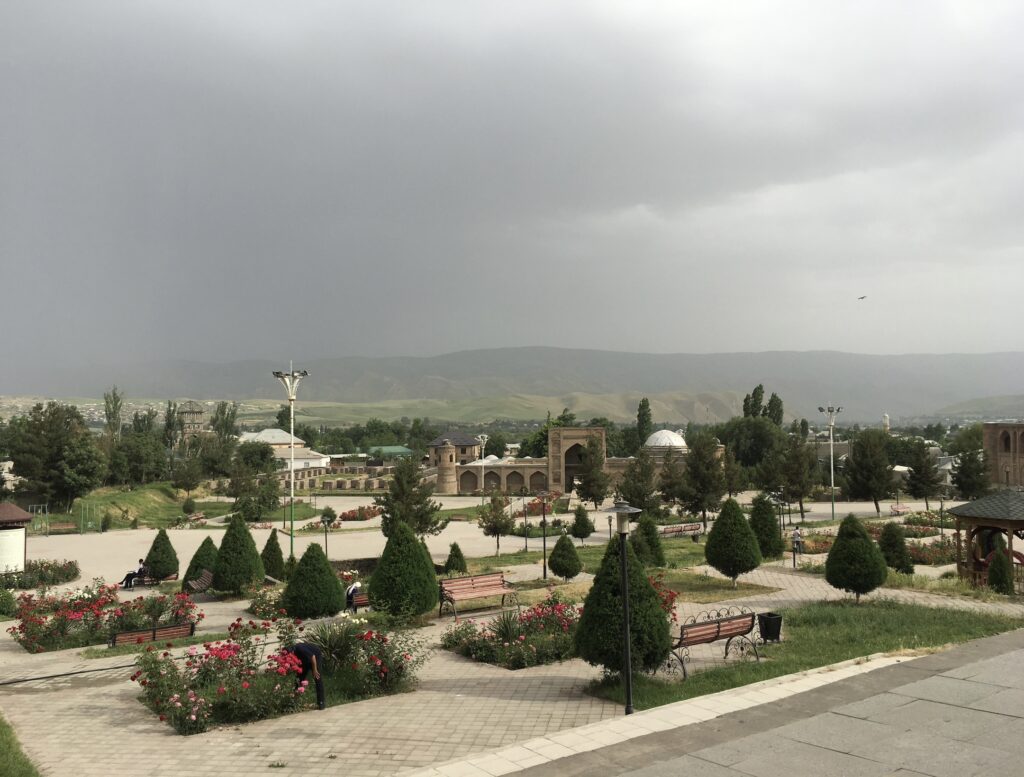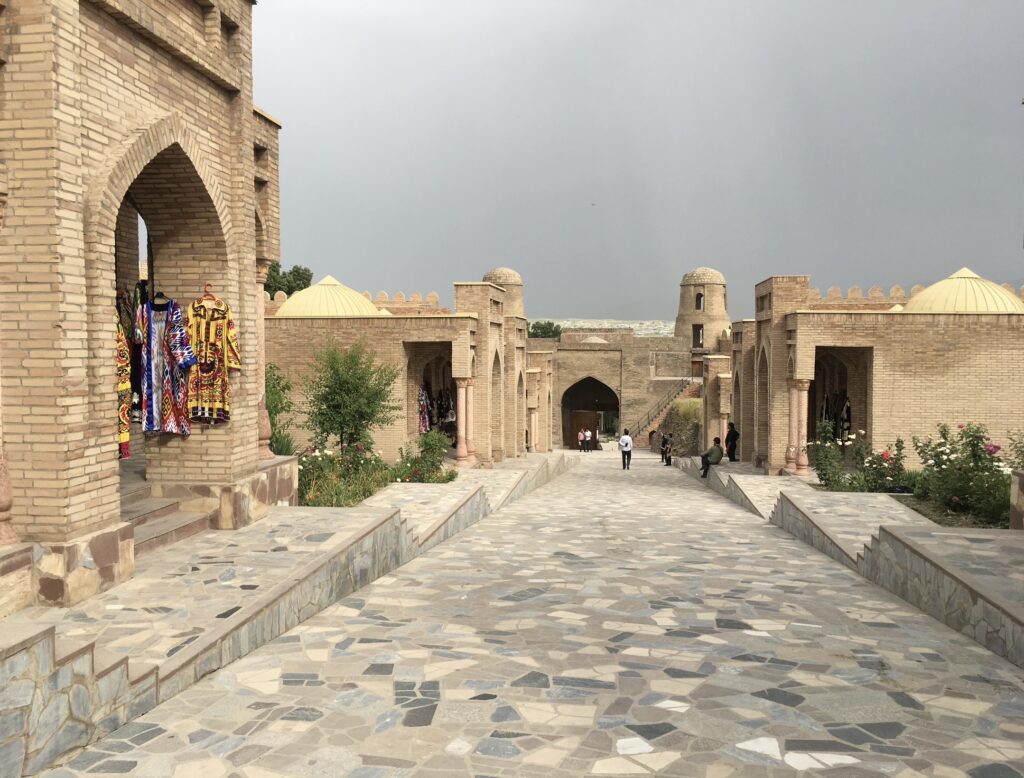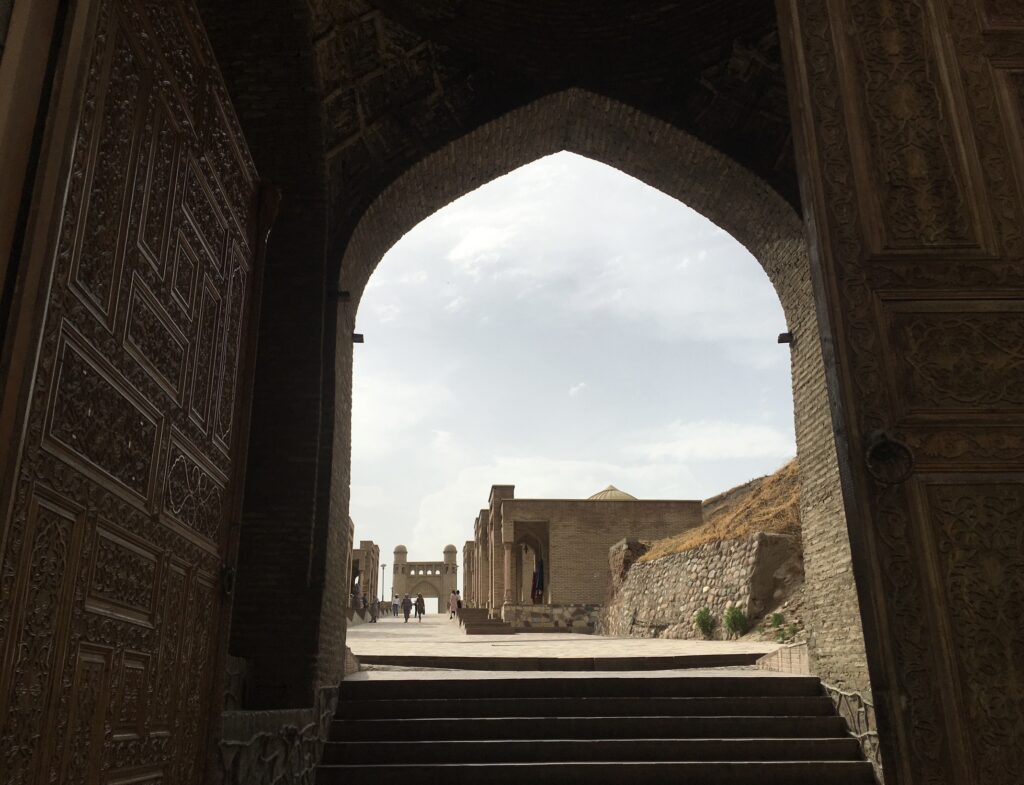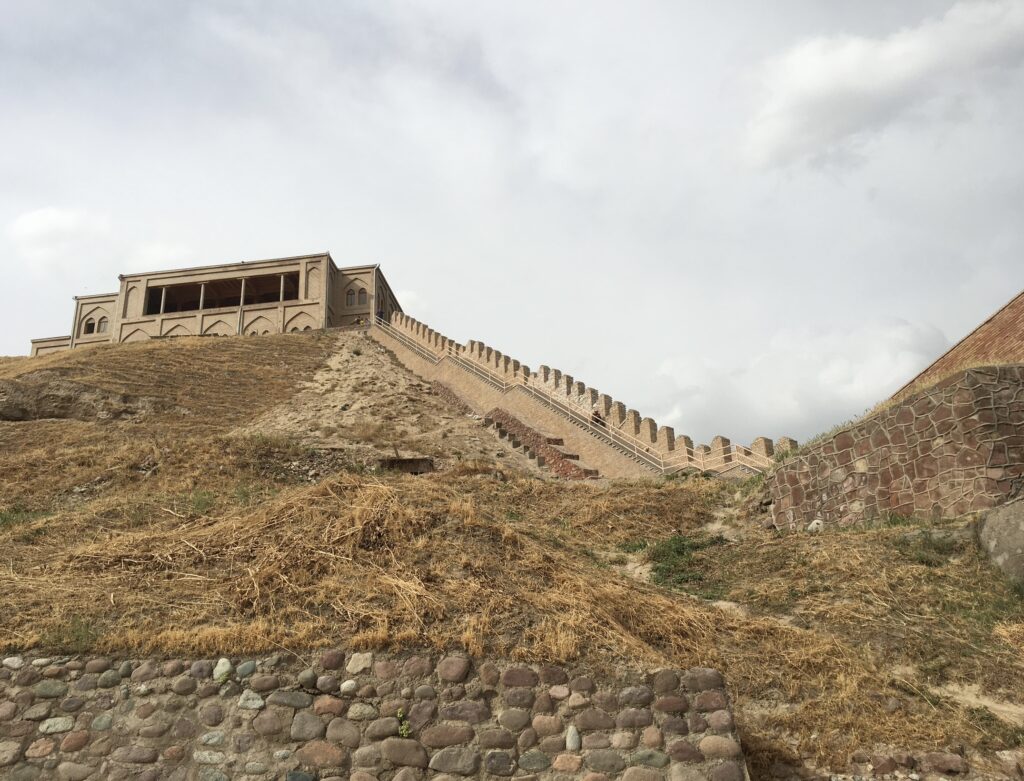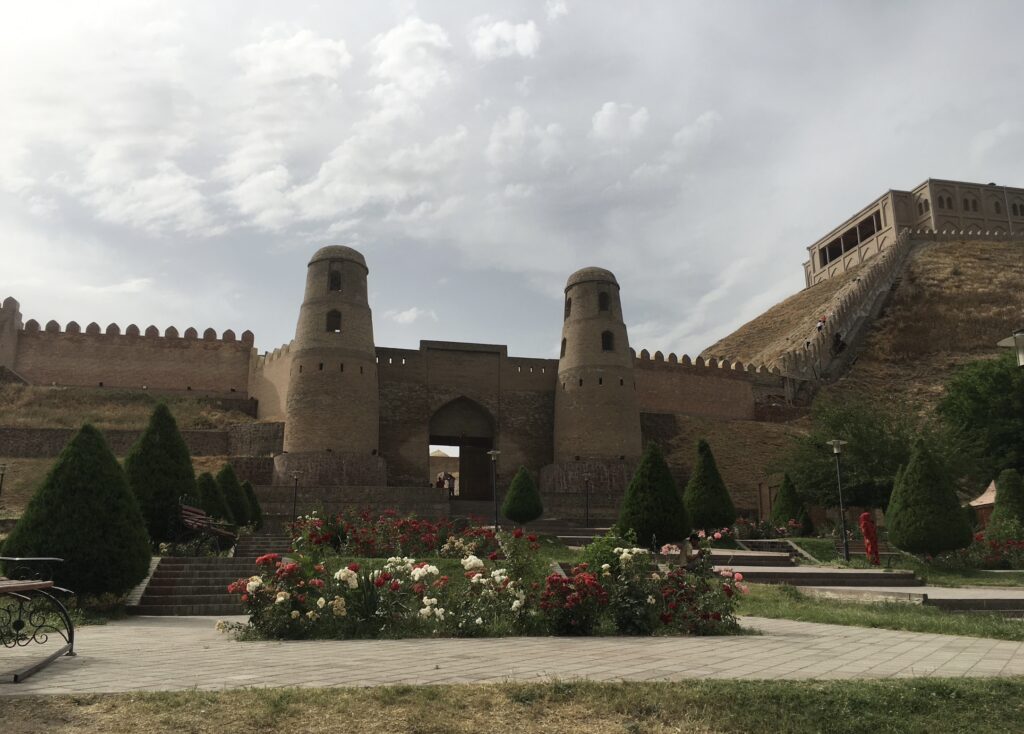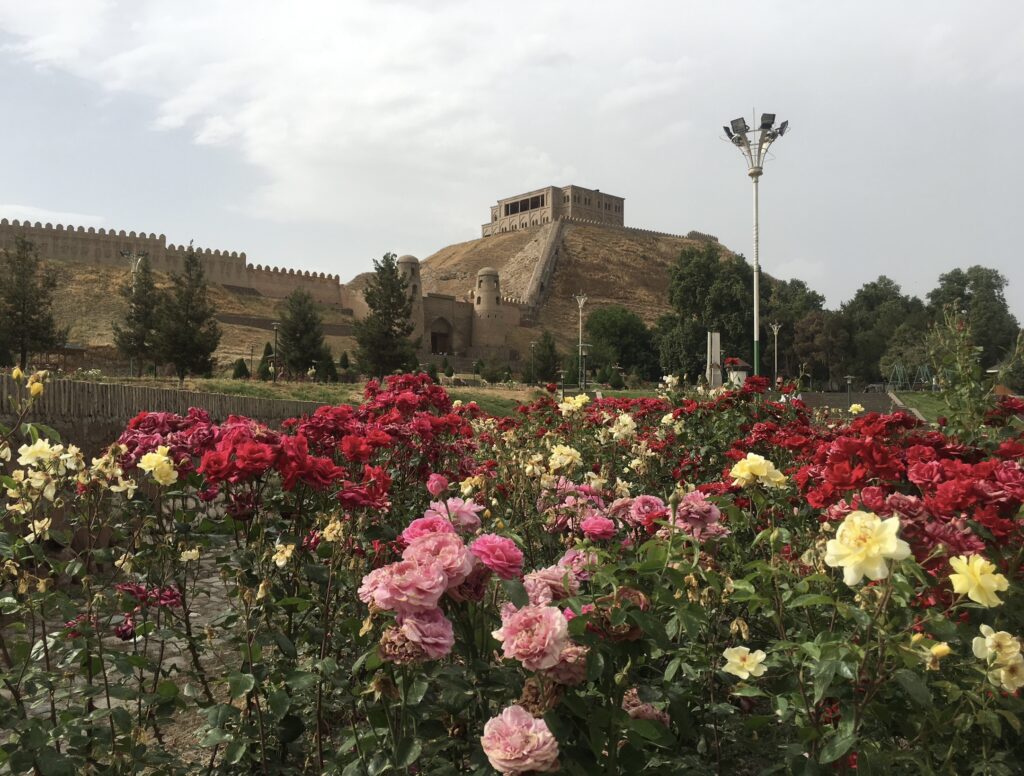Dushanbe, the capital city of Tajikistan, is located in the western part of the country, in the Hissar Valley. The city is the largest in Tajikistan and serves as its political, cultural, and economic center. It lies along the Varzob River, surrounded by mountains, giving it a picturesque setting.
Dushanbe has a rich history, with influences from Persian, Russian, and Soviet cultures. It features a mix of Soviet-era architecture and modern buildings. Key landmarks include the National Museum of Tajikistan, Rudaki Park, and the Dushanbe Flagpole, one of the tallest flagpoles in the world. The city also boasts the Ismaili Centre, a striking piece of contemporary architecture.
The climate in Dushanbe is characterized by hot summers and mild winters. The city’s economy is diverse, with sectors like manufacturing, trade, and services playing significant roles. Additionally, Dushanbe is known for its vibrant bazaars, such as the Green Bazaar, where one can find a variety of local produce, spices, and crafts.
Dushanbe’s history and development are closely tied to the broader historical and cultural currents of Central Asia. Here’s an overview of its evolution:
Early History
- Pre-20th Century: The area around present-day Dushanbe has been inhabited since antiquity, with evidence of settlements dating back to the Bronze Age. It was a small village known as Dushanbe, which means “Monday” in Persian, named after its popular Monday market.
Soviet Era
- 1920s: Dushanbe began to transform significantly during the early Soviet period. After the Bolshevik Revolution, the region was incorporated into the Soviet Union, and Dushanbe was chosen as the capital of the newly formed Tajik Autonomous Soviet Socialist Republic in 1924.
- Name Change: The city was renamed Stalinabad in 1929, in honor of Joseph Stalin. During this period, it saw extensive development as the Soviets established administrative and industrial infrastructure.
- 1940s-1950s: Stalinabad (Dushanbe) underwent rapid urbanization, with the construction of wide boulevards, government buildings, and housing projects. It became a key center for education and culture in Tajikistan.
- 1961: The city reverted to its original name, Dushanbe, following the de-Stalinization efforts led by Nikita Khrushchev.
Post-Independence
- 1991: Tajikistan declared independence from the Soviet Union, and Dushanbe became the capital of the independent Republic of Tajikistan. The early years of independence were marked by political instability and civil war (1992-1997), which slowed development and caused significant damage to the city’s infrastructure.
- Post-Civil War Recovery: After the civil war, Dushanbe embarked on a period of reconstruction and modernization. Efforts were made to restore damaged buildings and improve urban amenities.
- 2000s-Present: Dushanbe has continued to grow and develop, with investments in infrastructure, public services, and cultural institutions. Modern buildings and landmarks, such as the Dushanbe Flagpole and the Ismaili Centre, have been added to the city’s landscape. Additionally, the city has worked to preserve its historical heritage while embracing new architectural styles and urban planning methods.
Cultural and Economic Development
- Cultural Hub: Dushanbe has maintained its status as the cultural heart of Tajikistan, hosting numerous theaters, museums, and cultural festivals. The city reflects a blend of Tajik, Persian, and Soviet influences in its cultural life.
- Economic Growth: The economy of Dushanbe is diverse, with a mix of manufacturing, trade, and services. The city has seen growth in sectors like construction, retail, and tourism. Modern shopping centers and business districts are increasingly part of the urban landscape.
Dushanbe’s journey from a small village to a bustling capital city reflects the dynamic history of Tajikistan and Central Asia.
Tajikistan’s economy is characterized by a mix of agriculture, industry, and services, with significant contributions from remittances sent by Tajik citizens working abroad. Here’s a detailed overview of its economic structure:
Agriculture
- Primary Sector: Agriculture plays a crucial role in Tajikistan’s economy, employing a large portion of the population. The country’s fertile valleys support the cultivation of various crops.
- Key Products: Major agricultural products include cotton, wheat, fruits (such as apricots and pomegranates), and vegetables. Livestock farming is also important, with sheep, goats, and cattle being the main animals raised.
- Challenges: The agricultural sector faces challenges such as water scarcity, outdated farming techniques, and limited access to modern equipment.
Industry
- Manufacturing and Mining: The industrial sector includes manufacturing and mining. Tajikistan has significant reserves of minerals like silver, gold, antimony, and uranium. The mining industry is a vital part of the economy, with gold and aluminum being major exports.
- Aluminum Production: The Tajik Aluminum Company (TALCO) is one of the largest industrial enterprises in the country, producing aluminum for export.
- Construction: The construction sector has been growing, driven by infrastructure projects and urban development, particularly in the capital, Dushanbe.
Energy
- Hydropower: Tajikistan has substantial hydropower potential, with numerous rivers flowing through the mountainous terrain. The country aims to become a significant exporter of electricity to neighboring countries. Major hydropower plants include the Nurek Dam and the Rogun Dam, which, when completed, will be one of the tallest dams in the world.
- Energy Challenges: Despite its potential, Tajikistan faces challenges in energy distribution, especially in rural areas, leading to seasonal power shortages.
Services
- Retail and Trade: The services sector includes retail trade, banking, telecommunications, and tourism. The retail market is expanding, with new shopping centers and markets emerging in urban areas.
- Tourism: Tajikistan’s natural beauty, including mountains, lakes, and historical sites, holds significant potential for tourism. The government has been promoting tourism to diversify the economy.
Remittances
- Labor Migration: A significant portion of Tajikistan’s GDP comes from remittances sent by Tajik citizens working abroad, primarily in Russia. These remittances are crucial for many households, providing essential income for daily needs.
- Economic Impact: Fluctuations in remittance inflows can significantly impact the national economy, making it vulnerable to economic conditions in host countries.
Economic Challenges
- Poverty and Unemployment: Despite progress, Tajikistan continues to face high levels of poverty and unemployment. Efforts to create jobs and improve living standards are ongoing priorities for the government.
- Infrastructure: Developing and modernizing infrastructure, including transportation, communication, and energy distribution, is critical for economic growth.
- Political Stability: Political stability and governance are essential for attracting foreign investment and ensuring sustainable economic development.
International Trade and Aid
- Trade Partners: Tajikistan’s main trade partners include Russia, China, Kazakhstan, and Turkey. The country imports machinery, food products, and consumer goods, while exporting aluminum, cotton, and minerals.
- Foreign Aid: International aid and financial assistance from organizations like the World Bank, Asian Development Bank, and International Monetary Fund play a significant role in supporting development projects and economic reforms.
Overall, Tajikistan’s economy is in a transitional phase, with ongoing efforts to diversify and modernize its economic base while addressing significant challenges.
Dushanbe, the capital of Tajikistan, offers a variety of tourist attractions that reflect its rich cultural heritage and modern development. Here are some notable sites:
Historical and Cultural Attractions
- National Museum of Tajikistan: This museum showcases the history, culture, and art of Tajikistan, with extensive collections of artifacts, including ancient relics, manuscripts, and modern artworks.
- Gurminj Museum of Musical Instruments: Dedicated to traditional Tajik musical instruments, this museum offers a unique glimpse into the country’s musical heritage.
- Rudaki Park: A beautiful and expansive park named after the famous Persian poet Rudaki, featuring gardens, fountains, and statues, making it a popular spot for relaxation and leisure.
Architectural Landmarks
- Palace of Nations (Kokhi Millat): This impressive building is used for state functions and is notable for its grand architecture and beautiful surrounding gardens.
- Dushanbe Flagpole: Once the tallest flagpole in the world, it stands at 165 meters and is a prominent feature in the city’s skyline.
- Ismaili Centre: A stunning example of contemporary architecture, the Ismaili Centre serves as a religious, cultural, and educational hub for the Ismaili Muslim community.
Religious Sites
- Haji Yaqub Mosque: One of the largest mosques in Dushanbe, it is a significant place of worship and a fine example of modern Islamic architecture in Tajikistan.
- St. Nicholas Cathedral: An important place of worship for the Orthodox Christian community in Dushanbe, known for its beautiful interior and serene atmosphere.
Markets and Bazaars
- Green Bazaar (Mehrgon Market): A bustling market where visitors can experience the local culture and buy a variety of goods, including fresh produce, spices, and traditional crafts.
Natural Attractions
- Botanical Garden: A tranquil place to explore a diverse collection of plant species, offering a peaceful retreat within the city.
- Victory Park (Pobeda Park): Located on a hill overlooking Dushanbe, this park offers panoramic views of the city and is a popular spot for picnics and walks.
Modern Attractions
- Navruz Palace: Originally built as a teahouse, this palace is now used for various cultural events and ceremonies, showcasing intricate woodwork and traditional designs.
- Rohat Teahouse: A historic and beautifully decorated teahouse where visitors can enjoy traditional Tajik tea and cuisine.
Educational and Scientific Institutions
- National Library of Tajikistan: One of the largest libraries in Central Asia, housing an extensive collection of books, manuscripts, and academic resources.
- Institute of History, Archaeology, and Ethnography: An important research center for studying the rich history and culture of Tajikistan.
These attractions make Dushanbe a city with a diverse array of sights to explore, offering insights into its historical, cultural, and modern facets.
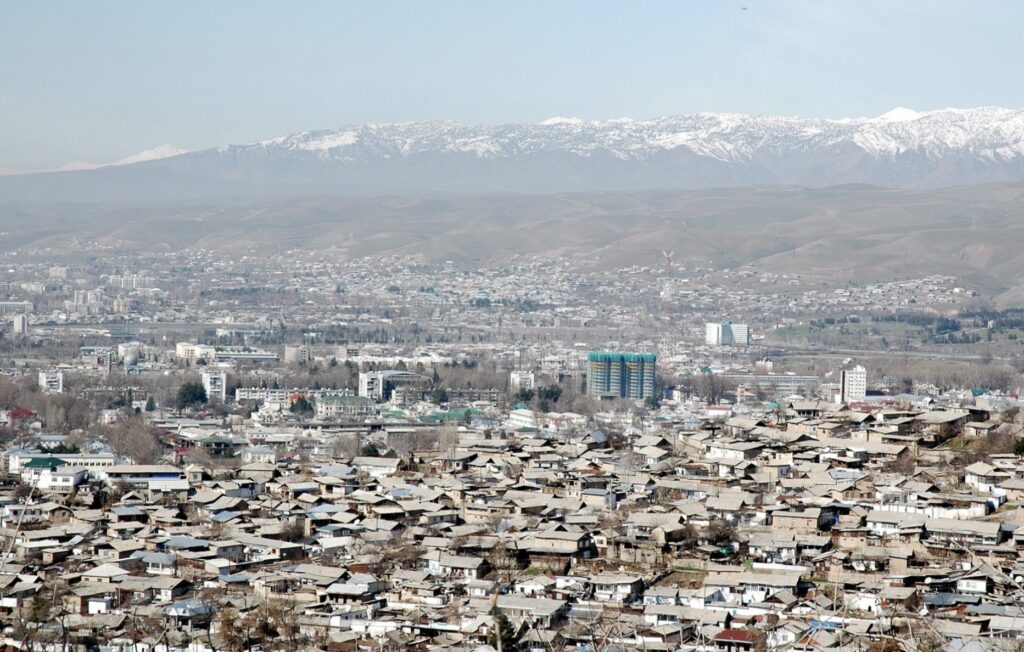
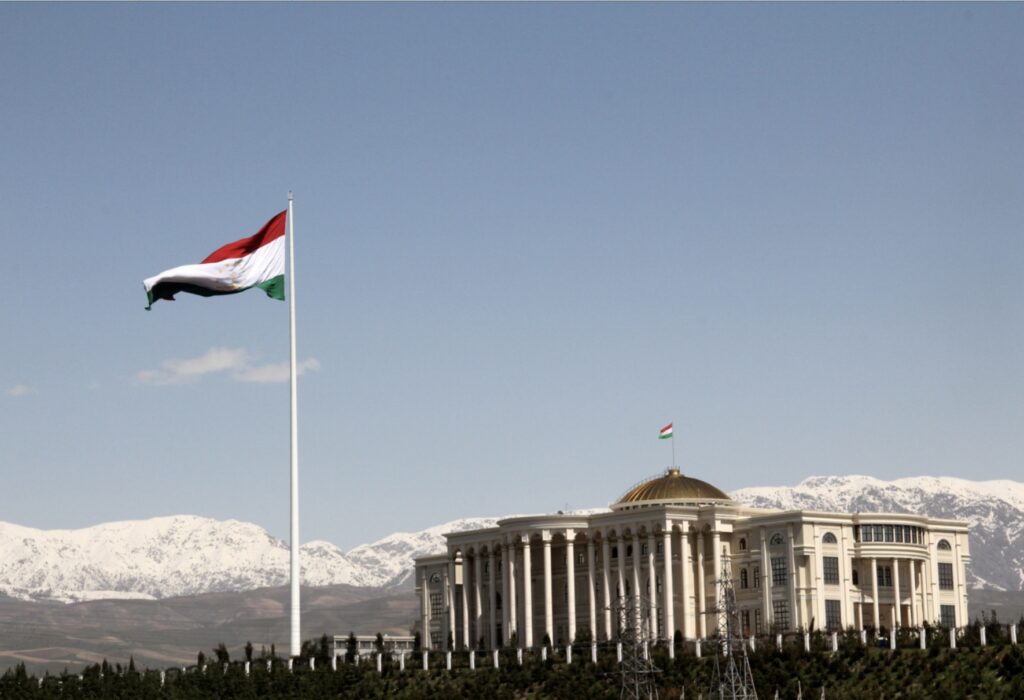
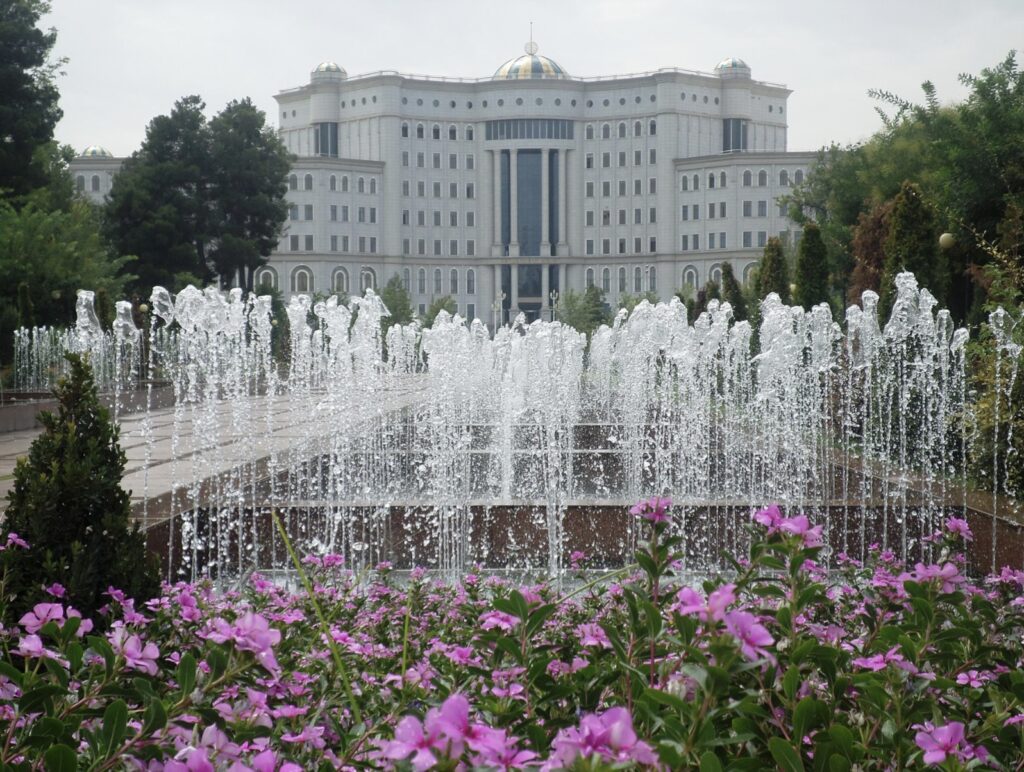
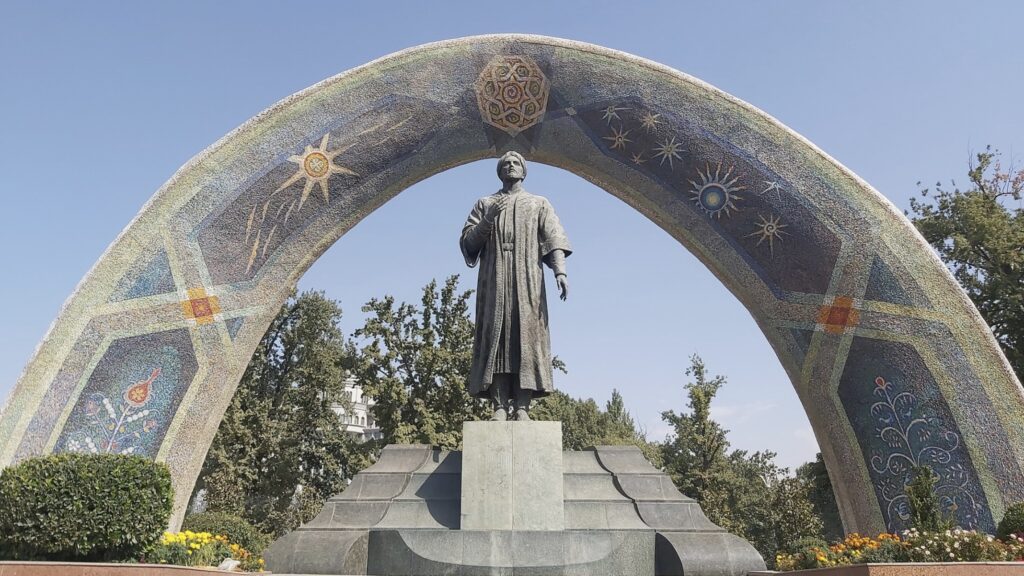
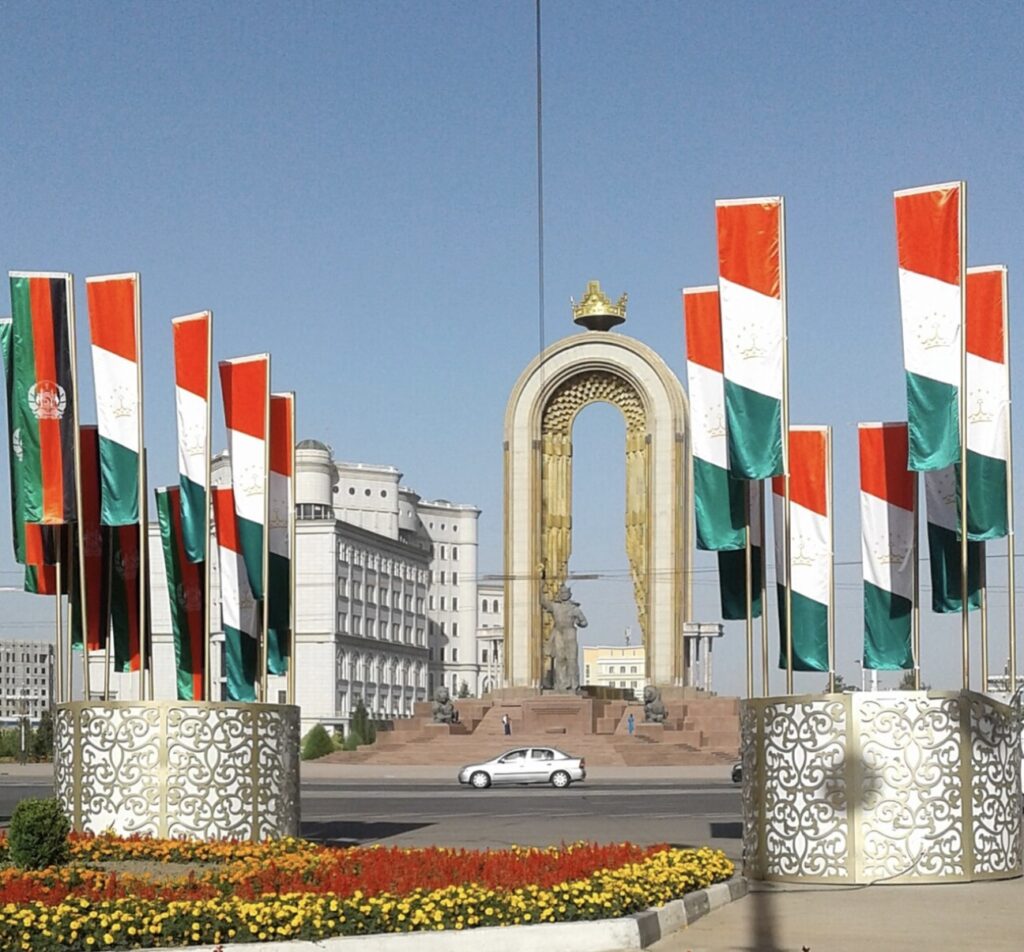
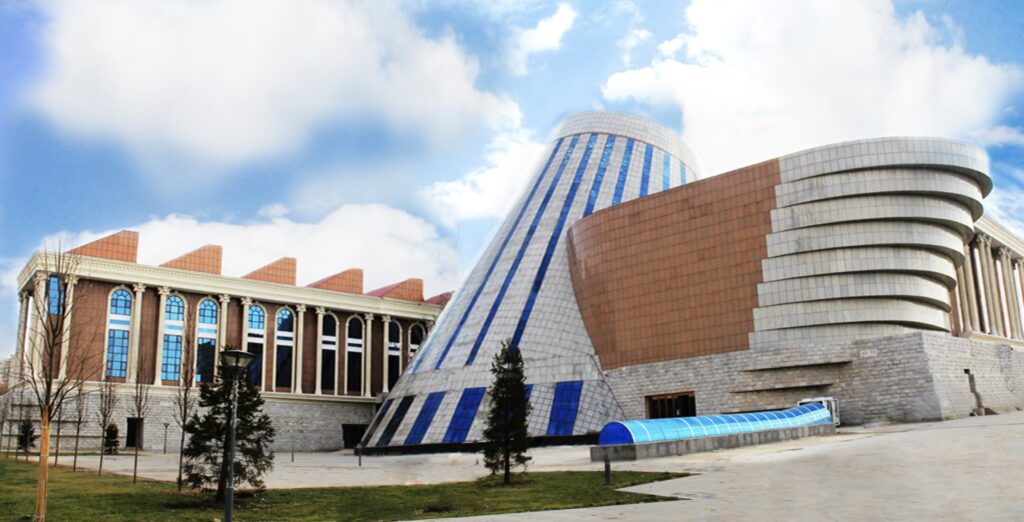
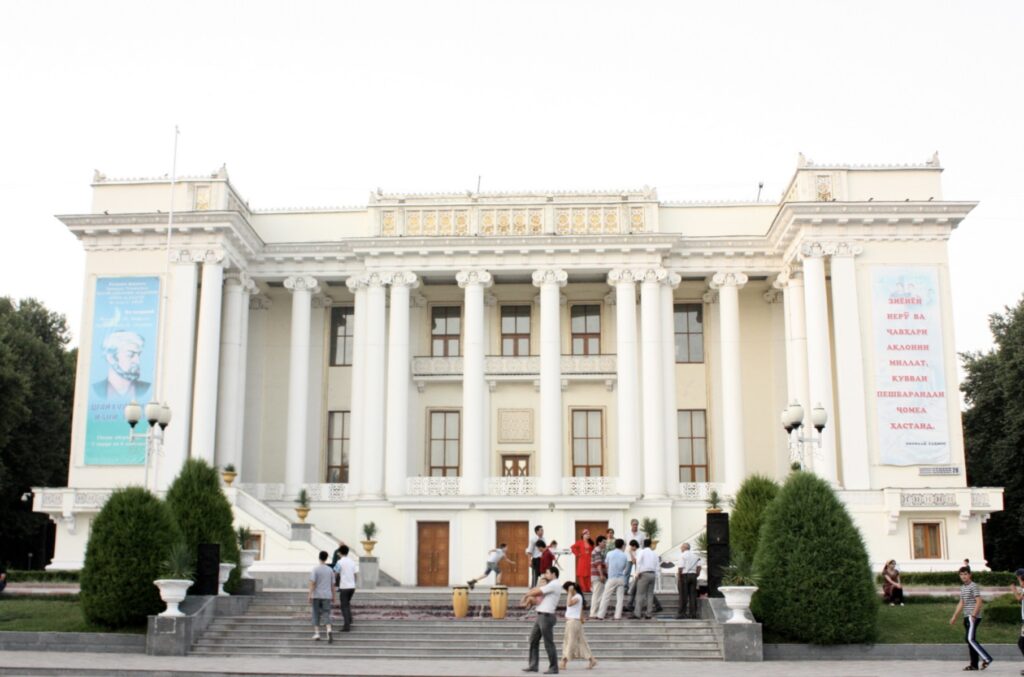
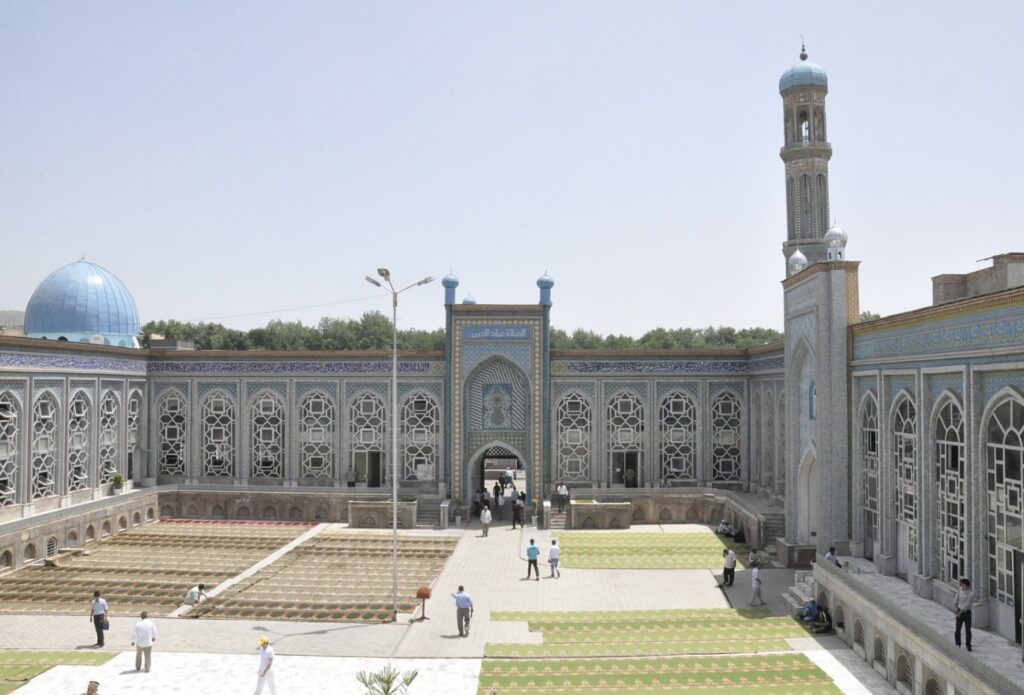
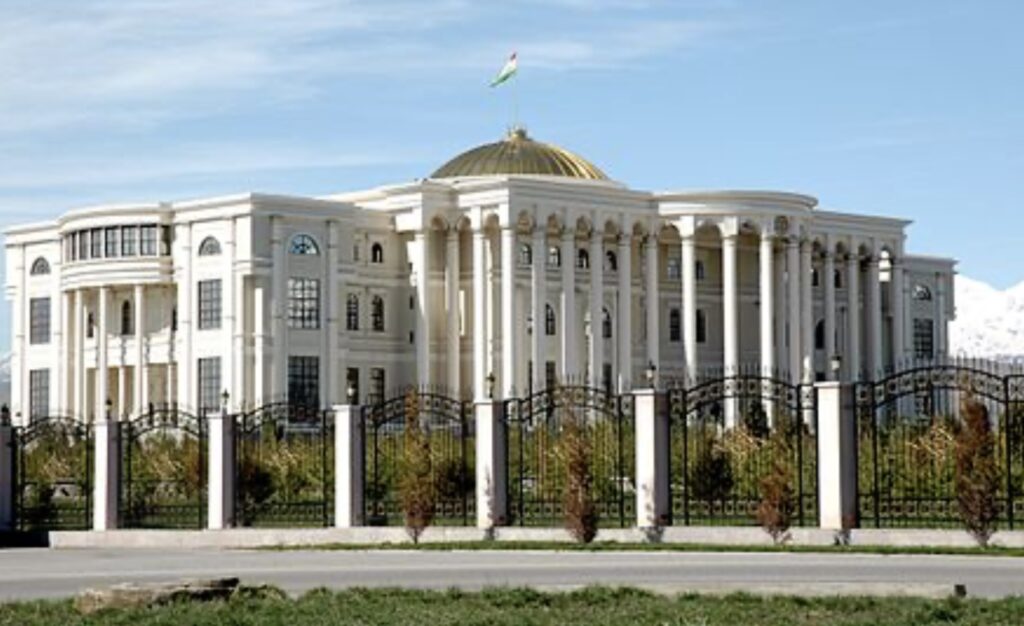
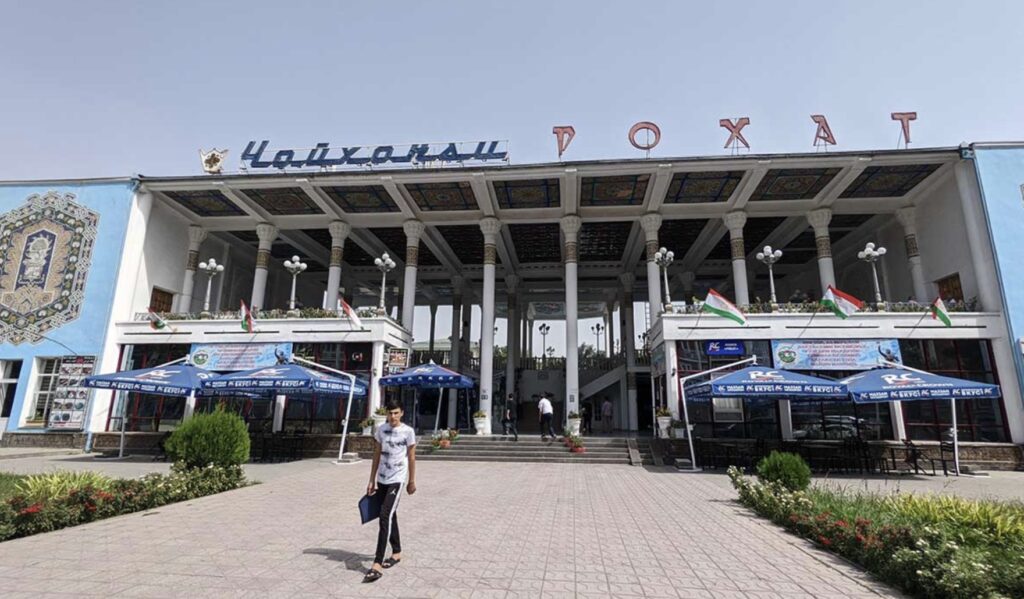
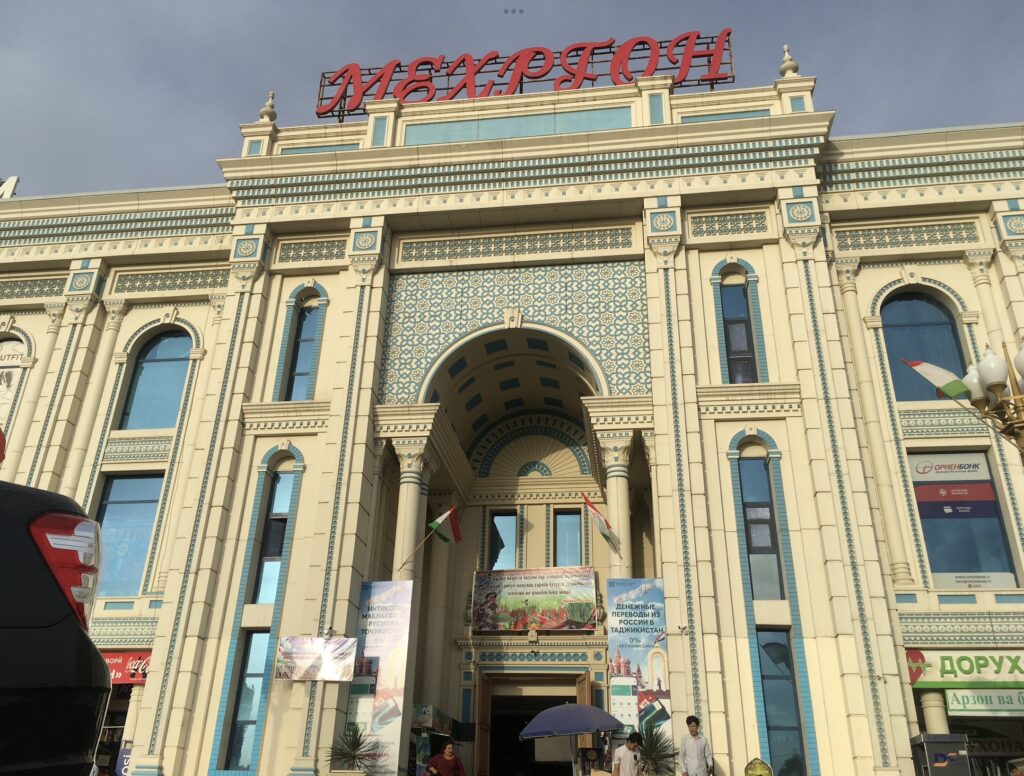
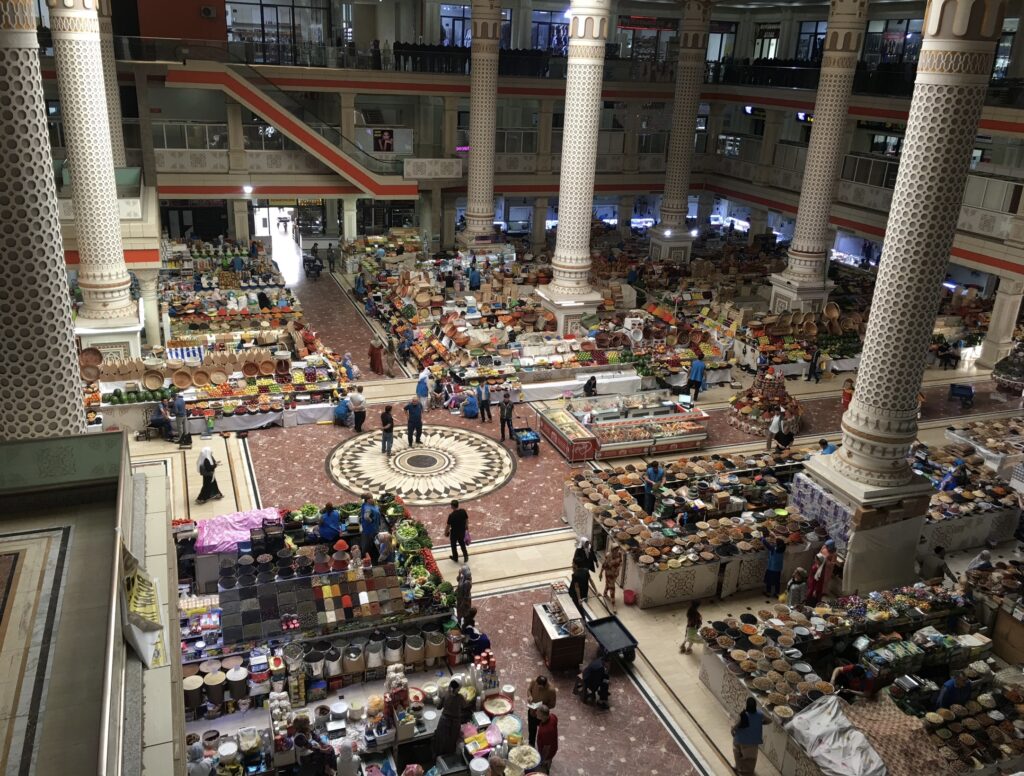
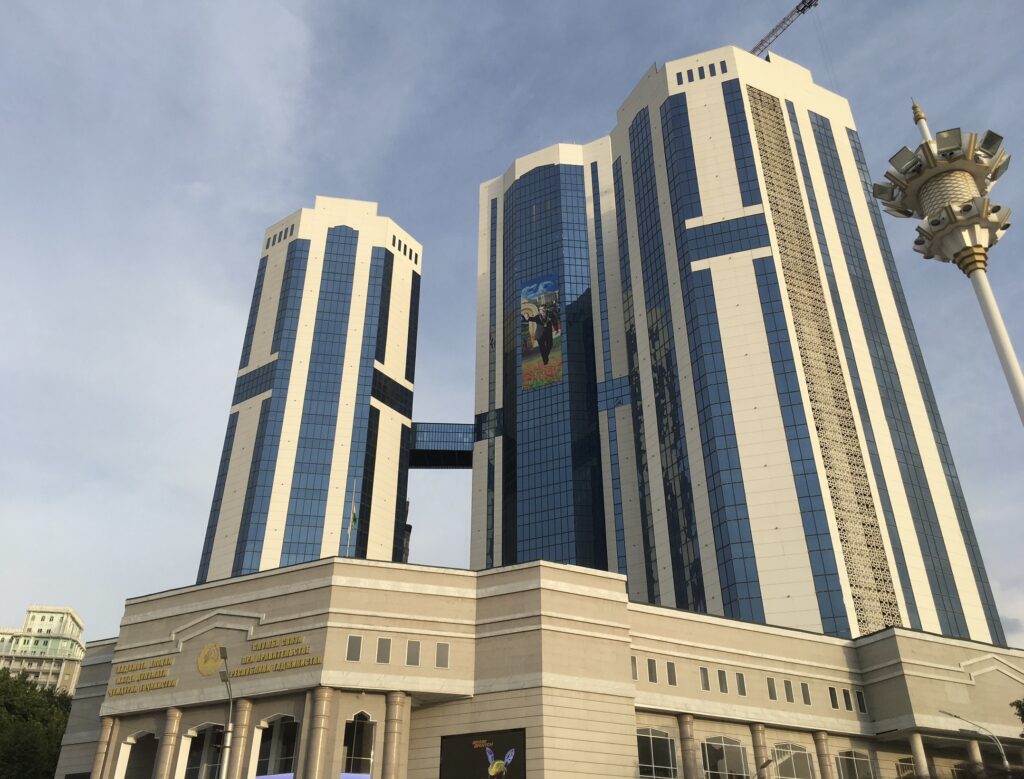
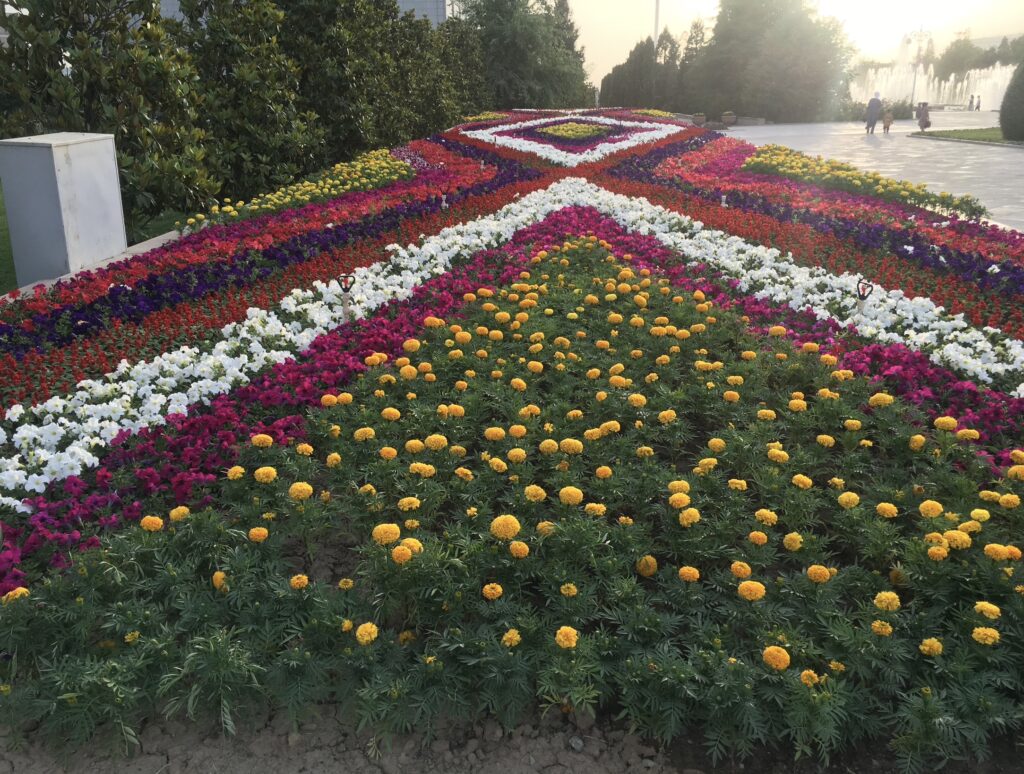
Near Dushanbe, there are several historical monuments and sites that offer a glimpse into the rich history and cultural heritage of Tajikistan. Here are some notable ones:
Hissar Fortress (Hisor Fortress)
• Location: Approximately 15 km west of Dushanbe.
• Description: One of the most significant historical sites near Dushanbe, Hissar Fortress dates back over 2,500 years. The fortress complex includes a reconstructed entrance gate, old madrasa, and mausoleum. It served as a strategic stronghold throughout various periods of Tajik history.Ajina Tepe
• Location: Near the town of Vahdat, about 12 km east of Dushanbe.
• Description: This archaeological site is an ancient Buddhist monastery dating back to the 7th-8th centuries. It is known for the discovery of a large reclining Buddha statue, which is now housed in the National Museum of Tajikistan.
